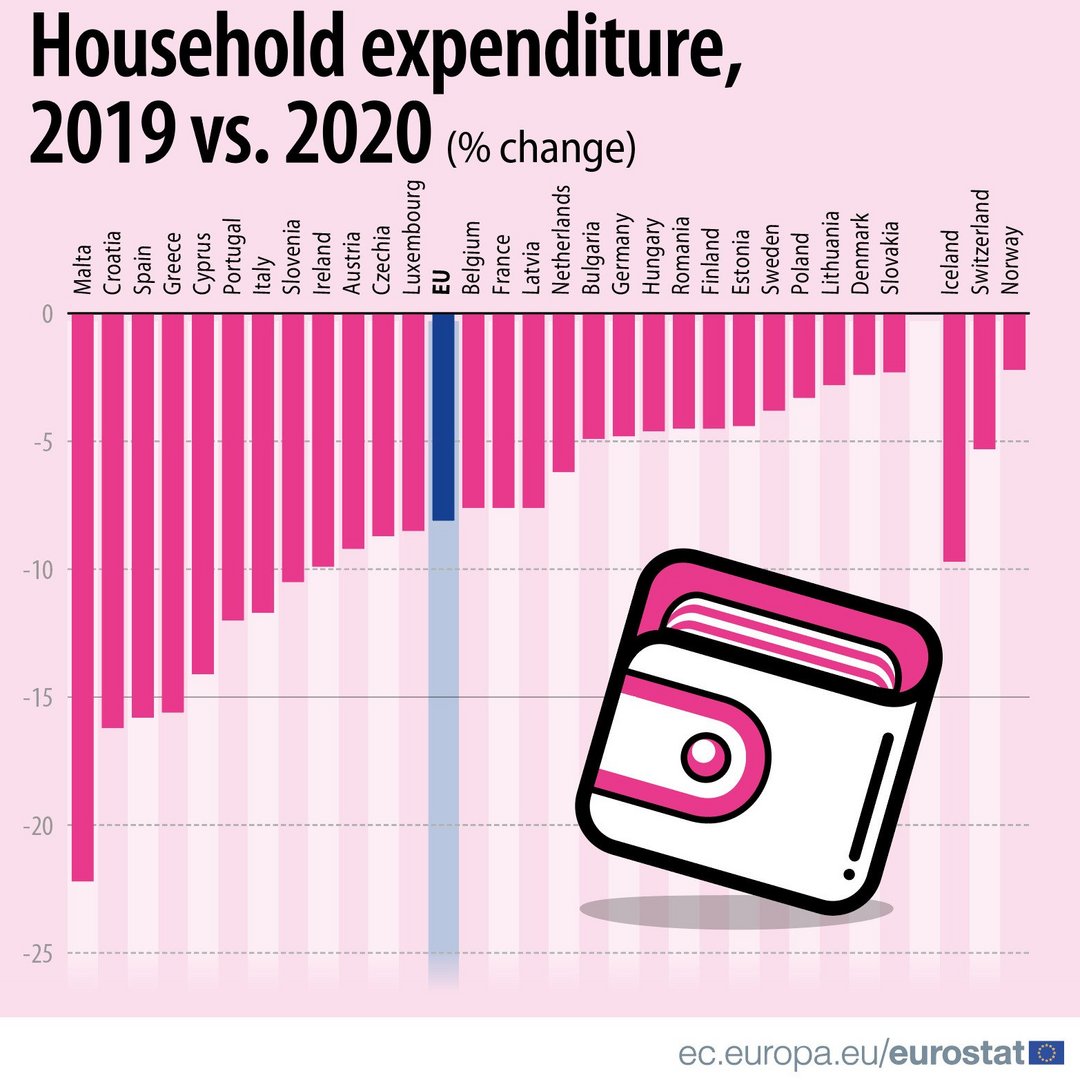Household consumption expenditure in Cyprus in 2020 fell by 14.1 per cent over the previous year, the fifth biggest drop in the EU27, according to the latest figures released by Eurostat.
These show that in 2020, household consumption expenditure in the EU decreased by an unprecedented 8 per cent compared with 2019. In fact, all the EU Member States recorded a decrease in household consumption expenditure.
This is the largest annual reduction recorded since the time series started and it is due to the effects of the Covid-19 pandemic, Eurostat said.
Social distancing measures, government restrictions imposed on the movement of people and non-essential economic activities severely affected household consumption expenditure.
When comparing 2019 with 2020, the largest decrease was recorded in Malta (around -22 per cent), followed by Croatia, Spain and Greece (all around -16 per cent).
On the other hand, the smallest decreases were recorded in Slovakia and Denmark (both around -2 per cent), followed by Lithuania and Poland (both around -3 per cent).
In Cyprus, the biggest share of household consumption expenditure went to housing, water and electricity which accounted for 18 per cent of the total, below the EU 27 average of 25.7 per cent.
Next was food and non-alcoholic beverages with 14.1 per cent, close to the EU average of 14.8 per cent
Restaurant and hotels came in third with 12.9 per cent of the total, more than twice the 6 per cent EU average.
Transport was fourth with 12.5 per cent compared to the EU average of 11.6 per cent. Other goods and services accounted for 10.2 per cent (EU 27 11.5 per cent), while recreation and culture 6.8 per cent (EU 7.8 per cent)
Furnishing and household equipment absorbed 5.8 per cent of the total, similar to the EU average of 6 per cent, while alcoholic beverages and tobacco accounted for 5.6 per cent – above the 4.4 per cent EU 27 average.
Clothing and footwear at 5.1 per cent of the total was also above the EU’s average of 4.1 per cent. Education accounted for 3.6 per cent, well up on the EU 27 average of 0.9 per cent. Communications absorbed 2.9 per cent of the total (EU 2.6 per cent) and health 2.5 per cent (EU 4.6 per cent).







Click here to change your cookie preferences